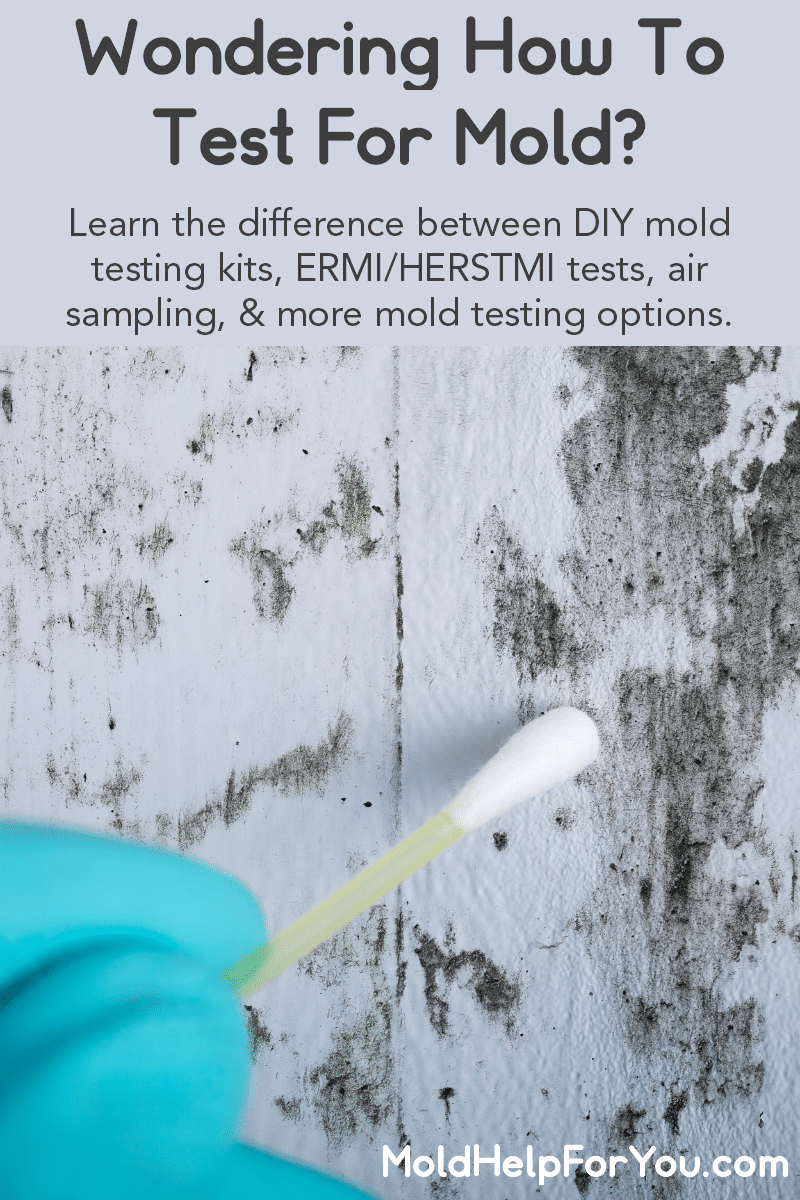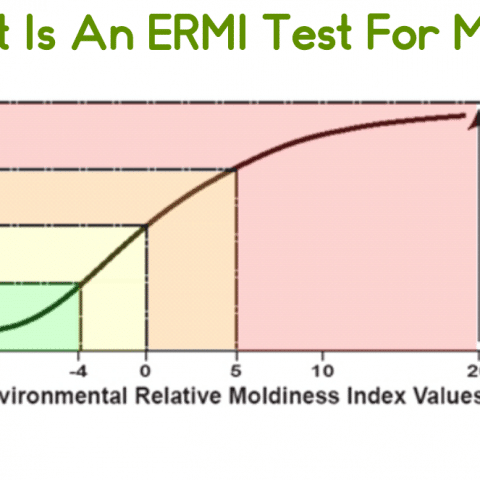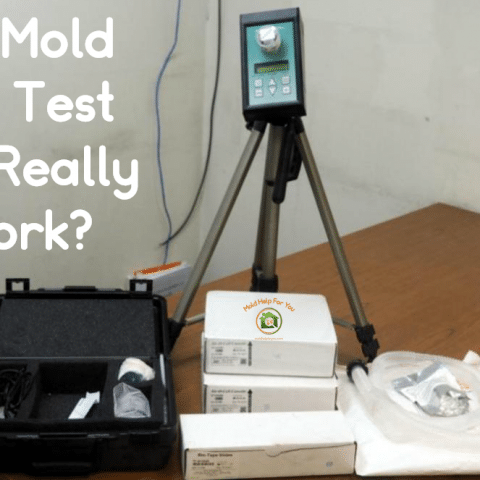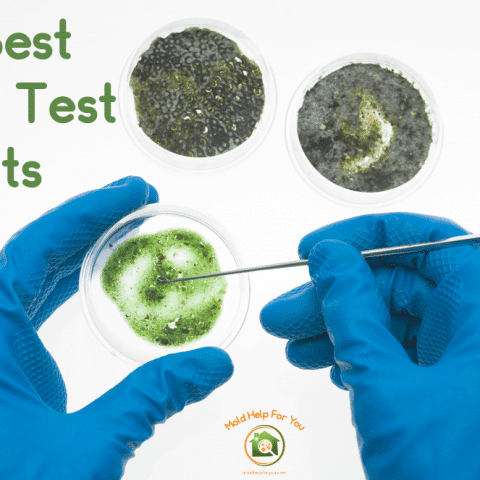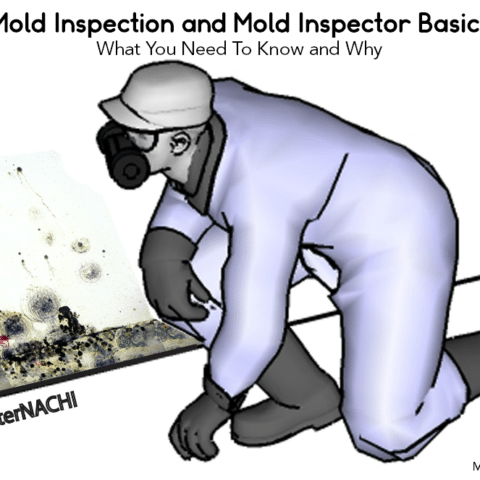So you are wondering how to test for mold? I get it. There are a lot of options out there and it’s hard to know which method you should use or which mold testing option might be best for your given situation.
While I go much more in depth on the individual types of mold tests in my mold testing series (see the end of this page for those posts), I can give you a general overview of everything you need to know about the types of mold tests and how to test for mold so that you can decide which type of mold testing is best for you right now.
Read on for more information about mold testing or click a heading below to jump straight to that section.
- Why Test For Mold
- When Should You Test For Mold
- Are There Times When Mold Testing Is Useless?
- How To Test For Mold
- Types Of Mold Testing
- Are Mycotoxin Tests The Same As Mold Tests?
- Is There An Instant Mold Test Kit?
- Do DIY Mold Test Kits Work?
- How Much Do Mold Tests Cost?
- Affordable Mold Testing
- DIY Mold Testing vs. Hiring a Professional Mold Inspector
- All Articles On This Site Related To Mold Testing
Why Test For Mold
The primary reason to test for mold is because under certain conditions, indoor mold has the potential to damage property and cause health problems in humans and animals. Yes, it is really that simple. You test for mold to protect your health and your property.
When Should You Test For Mold?
- There have been leaks or water intrusions that were not noticed or dealt with immediately.
- When a water event was noticed within 24 hours and the accessible area dried immediately but water possibly went behind a wall or under flooring.
- When visible mold is not present, but the smell of mold is.
- If you think you have visible mold but aren’t sure.
- When unusual stains appear on furniture or building material.
- When there is a suspicion that elevated mold may exist in the air and/or behind walls.
- When you have health concerns or mystery health issues that doctors cannot pinpoint the cause of.
- To establish the presence of mold and the justification for remediation. Many remediation and insurance companies will not authorize or undertake mold remediation if the presence of mold growth is not scientifically demonstrated.
- To “clear” a remediation; that is, to show that all mold is gone after remediation. Often, mold remediation will miss a mold-contaminated area. Testing of the air in the contained work area will assure that the levels inside the work area are reduced to ambient levels. This also provides documentation for future real estate transfers that the mold was properly and effectively removed.
- If you are going to go into litigation to sue for damages from mold exposure.
- Before purchasing a home.
- If you are mold sensitive, before renting a home.
- If there is a Landlord/Tenant dispute as to whether there is a mold problem.
- If you are concerned about overall indoor air quality.
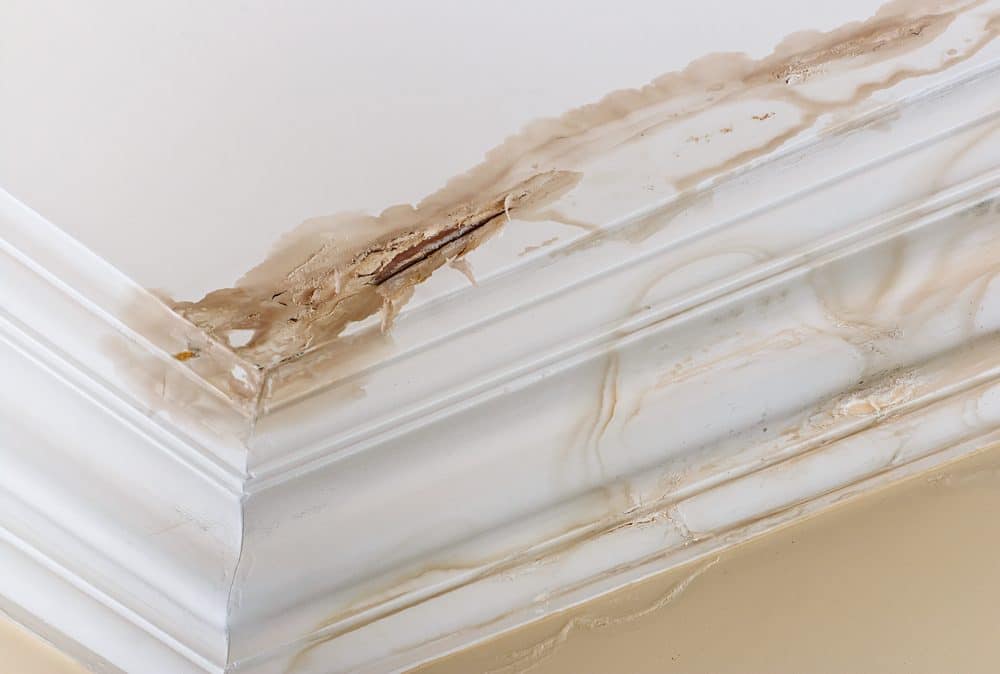
Are There Times When Mold Testing Is Useless?
There can be. If you have visible mold and plan on remediating and returning to your home, it doesn’t matter what type of mold is present. Remediation efforts will be the same. So you can save money on mold testing and put it to the most thorough remediation methods. However, you should consider having a mold inspection performed so you know exactly where the problem areas are.
How To Test For Mold
You can either test for mold yourself using one of the types of mold tests outlined below or you can hire a professional mold inspector who will come and not only take samples but also conduct a thorough inspection to find potential mold problems and leaks.
If you aren’t sure if you have a mold problem but suspect mold, some of the DIY mold testing options might be best for you. However, if you have had a leak or other water intrusion or highly suspect the presence of hidden mold, hiring a mold inspector is likely your best option. They can detect mold in walls, under floors, and in places you may not be able to access easily.
Types Of Mold Testing
There are three main types of mold testing options available. These are air sampling, surface sampling, and dust sampling. There is a fourth, less common way to test for mold as well. A Mold Dog.
Air Sampling
Air sampling is the most common form of sampling to assess the level of mold. Sampling of the inside and outdoor air is conducted and the results of the level of mold spores inside the premises and outside are compared. Often, air sampling will provide positive identification of the existence of non-visible mold.
Surface Testing for Mold
Surface sampling involves taking mold samples from a surface. There are different ways in which this is achieved.
- Swab samples – An object similar to a cotton swab is rubbed against the surface and then sent to a testing lab. The swab may also be rubbed against a petri dish and a culture allowed to grow.
- Tape samples – A piece of clear tape is pressed against the moldy surface and then removed. The idea behind this testing method is to remove mold from the surface so that it can be tested.
- Bulk samples – Bulk samples involve removing a piece of the potentially affected area to be sent to a lab for testing. This could be a piece of furniture or a piece of drywall as an example.
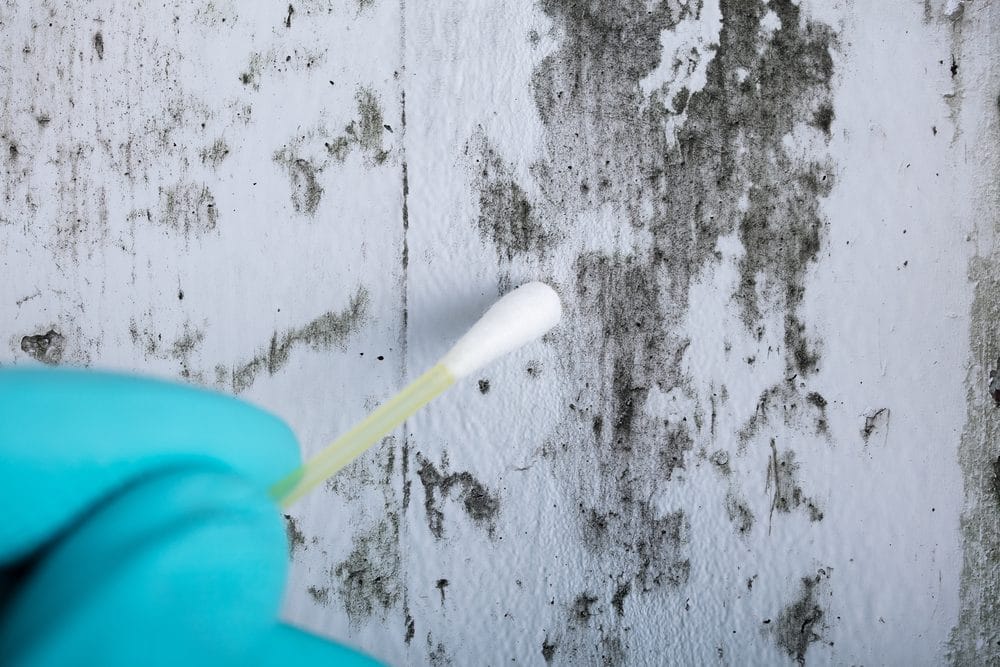
Dust Sampling
The mold spores settled in dust provide more historical information about what has been happening in your home. This can be a good or bad thing depending on a lot of variables which I will save for a more detailed post.
A dust test collects settled dust either by using a special dust cloth or a special vacuum canister. The dust cloth gives you more freedom to test in places like air ducts and on ceiling fans. A lot of people prefer the vacuum canister because it is less likely to become compromised by human error.
The dust samples are then sent to a lab where an ERMI or HERSTMI-2 are conducted. You can also opt for a combined ERMI mold and mycotoxin test with the EMMA test.
ERMI stands for Environmental Relative Moldiness Index. ERMI uses a DNA-based method for identifying 36 different species of mold. The test was originally developed by the US Environmental Protection Agency. The ERMI is considered the gold standard for mold testing especially when you are trying to get to the root of health issues.
HERTSMI-2 is an acronym for Health Effects Roster of Type Specific Formers of Mycotoxins and Inflammagens – 2nd Version. HERTSMI-2 is a mold test that analyses the dust sample provided for 5 molds. These molds are known as the “Big 5”.
Which mold species are identified in HERTSMI-2?
- Aspergilus Penicilloides
- Aspergillus Versicolor
- Chaetomium Globosum
- Stachybotrys Chartarum
- Wallemia Sebi
HERTSMI-2 is less expensive to conduct than the ERMI although the results of an ERMI can be converted to also show the HERTSMI-2 score.
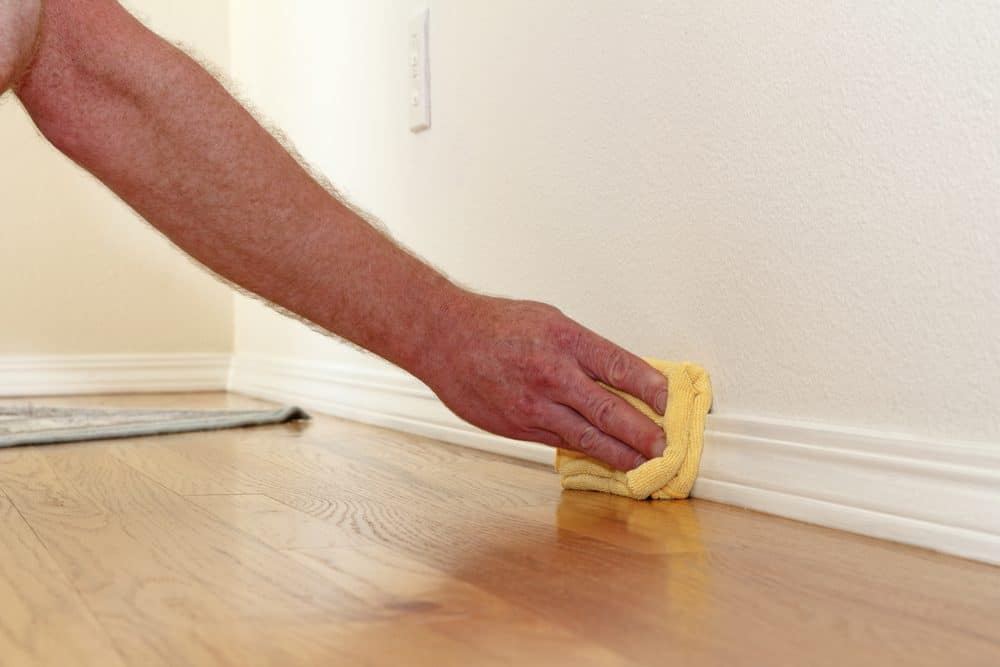
Mold Dogs
This is exactly like it sounds. A trained dog comes in and sniffs around for mold. While these dogs can be very accurate at finding the mold source, they do have quite a few limitations and conditions have to be perfect for them. Plus, they are crazy expensive.
Are Mycotoxin Tests The Same As Mold Tests?
NO! Mycotoxins are a beast of their own. You can learn more about mycotoxins here.
There is a very specific test for mycotoxins in your indoor environment. It is another dust test but it extracts only the mycotoxins present.
I highly suggest the EMMA test. It does test for 10 molds and 15 mycotoxins making it very affordable. While it doesn’t offer all the same information as the ERMI, if you are on a budget, this is my recommend option.
Is There An Instant Mold Test Kit?
Sorry, no there isn’t. Regardless of the method of mold testing you choose, there will be a waiting period. This can vary from a couple of days to several weeks depending on the mold test performed and for those samples being sent to a lab, how busy the lab is.
Do DIY Mold Test Kits Work?
If you suspect a mold problem but do not actually see it or smell it, these test kits do not help you locate the problem or tell you how serious it is. So while a DIY mold test kit can indicate there is a mold problem in your home, it doesn’t do much more than that. You still need to figure out where the mold growth is and why mold is growing.
While there are some very accurate DIY mold tests (like the ERMI or HERSTMI), you may or may not interpret the results correctly. Laboratory analysis can be very confusing. So while the mold testing method is accurate, your interpretation of the results may not be. (Did you know that I can interpret test results for you for a small fee? Learn more here).
How Much Do Mold Tests Cost?
Again, this really depends. A DIY petri dish style mold test can run as little as $10.00. A more comprehensive ERMI or HERSTMI test can run $250.00. A full panel with various testing options performed by a mold professional can be several thousand dollars. What you choose to spend really should be determined by why you are testing for mold and what you will do with the results.
Affordable Mold Testing
Affordable mold testing looks different for everyone. If you are on a very tight budget and not sure if you have mold, a DIY test kit like this is very affordable and a good starting point. If you know you have mold, are experiencing health issues, and need to make a decision about next steps, then the ERMI would be money well spent.
DIY Mold Testing vs. Hiring A Professional Mold Inspector
Do you have visible mold? If the answer is yes, then you don’t necessarily NEED to know what species of mold it is unless you are dealing with health issues or possibly a lawsuit against a landlord or a builder. You DO need to determine why you have mold and how to properly remediate it but insofar as hiring a mold inspector to test for mold or conducting additional mold tests on your own, you can save the money.
DIY mold testing is absolutely fine if you are unsure IF you have a mold problem. (Refer to the section above about When To Test For Mold). This can save you some money and give you an idea as to whether or not you truly have a mold event happening in your home.
Hiring a professional mold inspector is imperative if you are dealing with a landlord/tenant situation or if you are a homeowner and believe you may have a legal case against the builder, a contractor, another inspector, etc… Proper testing, techniques, and chain of custody become very important in these cases.
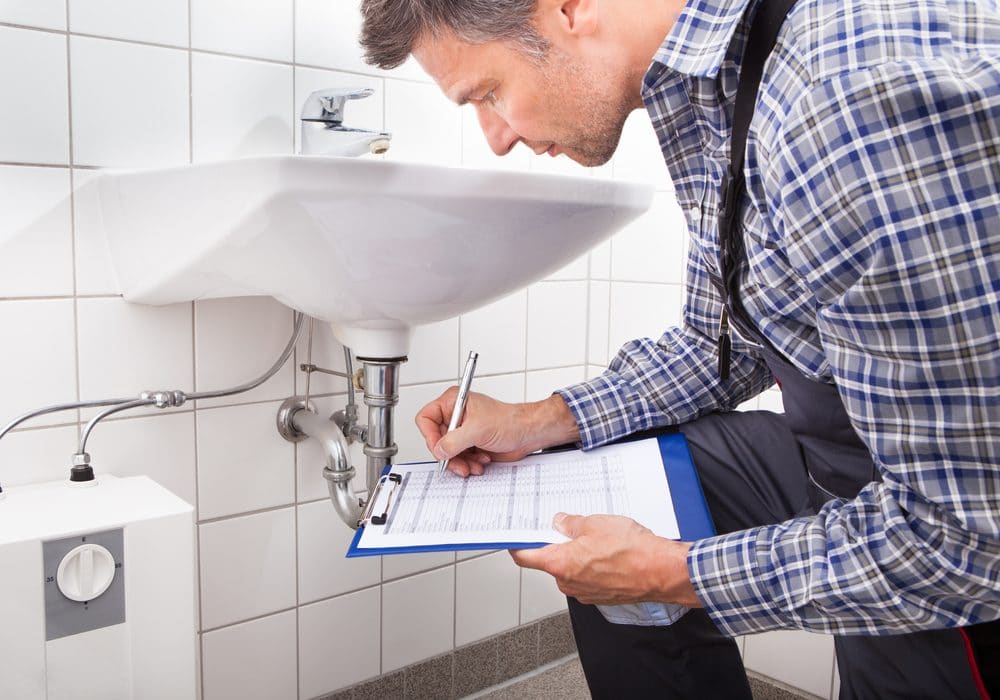
Hiring a professional mold inspector is also very useful if you are very certain you have a mold problem but aren’t sure where it is or what is causing it. Quite possibly you have done some DIY mold testing already and confirm the presence of mold spores in your home. A professional mold inspection includes not only sampling but also a comprehensive visual inspection to detect issues and problems related to mold that are not apparent to most people without training in building sciences and mold inspections. Basically, mold inspectors have tools and training to find issues the average person cannot.
Need More Detailed Information On Mold Testing? Check Out My DIY Mold Testing Posts Here!
Let's Test For Mold!
What Is An ERMI Mold Test?
What is an ERMI test for mold and how accurate is it? What about the HERTSMI mold test? Grab your complete guide to the ERMI and HERTSMI mold tests here.
Does A Mold Air Test Really Work?
How can you tell if there are mold spores in the air? Can you test air for mold & how long does it take? Learn more about the air mold test kit & when to use it.
The 7 Best Mold Test Kits
Need to test for mold in your home but not sure where to start? Learn more about the 7 best mold test kits plus whether more testing kits are accurate.
Mold Inspection and Mold Inspector Basics – What You Need To Know and Why
Do you need a mold inspection? Find out what happens during a mold inspection, the average cost, & how to find a mold inspector.
How To Test For Mold In Water + Water Mold Facts
Pet hair is a huge source of mold cross contamination and one people don't think much about. Learn how to test for a treat mold on animal fur.
Pin This Page For Later
